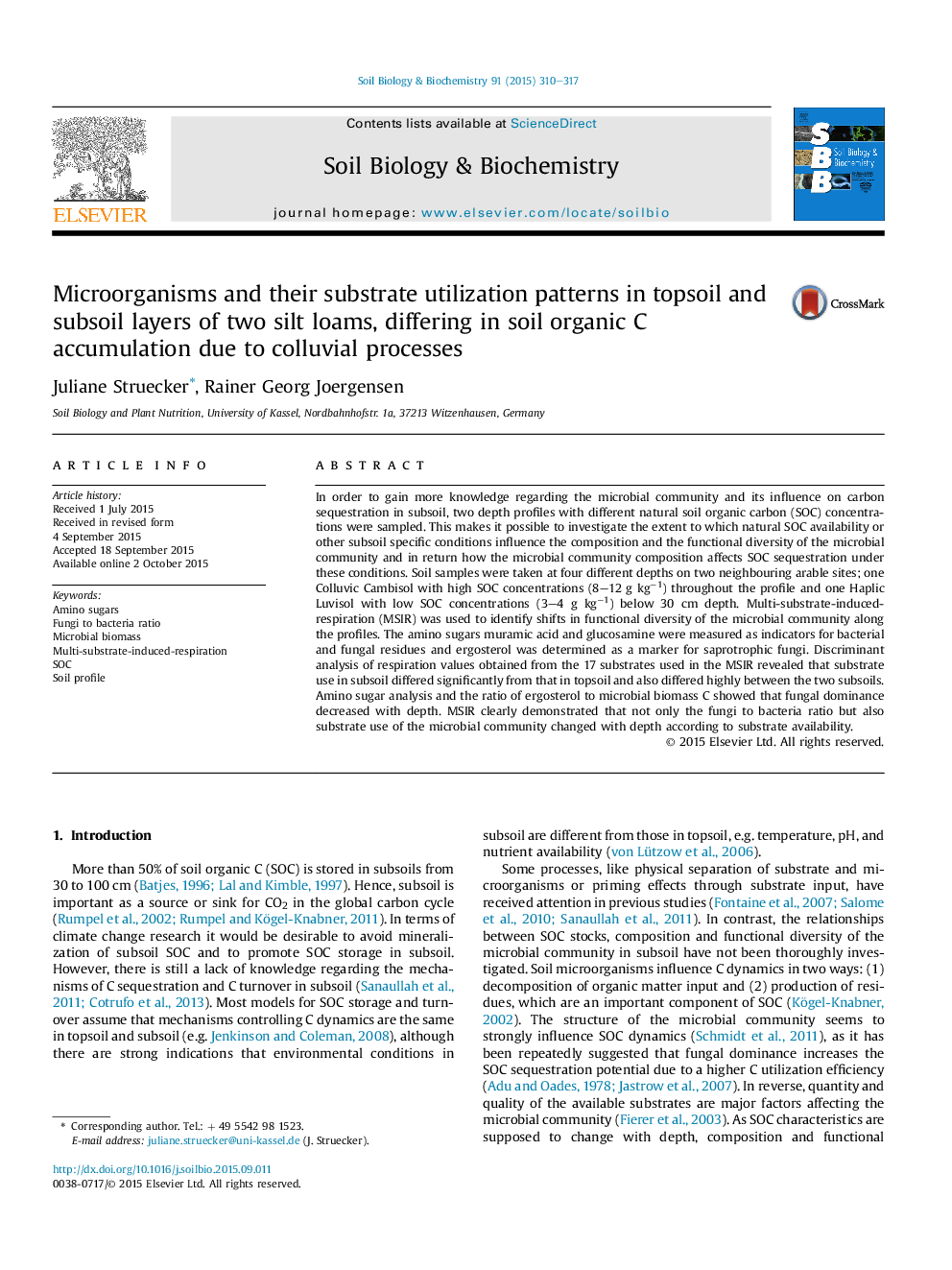| Article ID | Journal | Published Year | Pages | File Type |
|---|---|---|---|---|
| 8363862 | Soil Biology and Biochemistry | 2015 | 8 Pages |
Abstract
In order to gain more knowledge regarding the microbial community and its influence on carbon sequestration in subsoil, two depth profiles with different natural soil organic carbon (SOC) concentrations were sampled. This makes it possible to investigate the extent to which natural SOC availability or other subsoil specific conditions influence the composition and the functional diversity of the microbial community and in return how the microbial community composition affects SOC sequestration under these conditions. Soil samples were taken at four different depths on two neighbouring arable sites; one Colluvic Cambisol with high SOC concentrations (8-12 g kgâ1) throughout the profile and one Haplic Luvisol with low SOC concentrations (3-4 g kgâ1) below 30 cm depth. Multi-substrate-induced-respiration (MSIR) was used to identify shifts in functional diversity of the microbial community along the profiles. The amino sugars muramic acid and glucosamine were measured as indicators for bacterial and fungal residues and ergosterol was determined as a marker for saprotrophic fungi. Discriminant analysis of respiration values obtained from the 17 substrates used in the MSIR revealed that substrate use in subsoil differed significantly from that in topsoil and also differed highly between the two subsoils. Amino sugar analysis and the ratio of ergosterol to microbial biomass C showed that fungal dominance decreased with depth. MSIR clearly demonstrated that not only the fungi to bacteria ratio but also substrate use of the microbial community changed with depth according to substrate availability.
Related Topics
Life Sciences
Agricultural and Biological Sciences
Soil Science
Authors
Juliane Struecker, Rainer Georg Joergensen,
